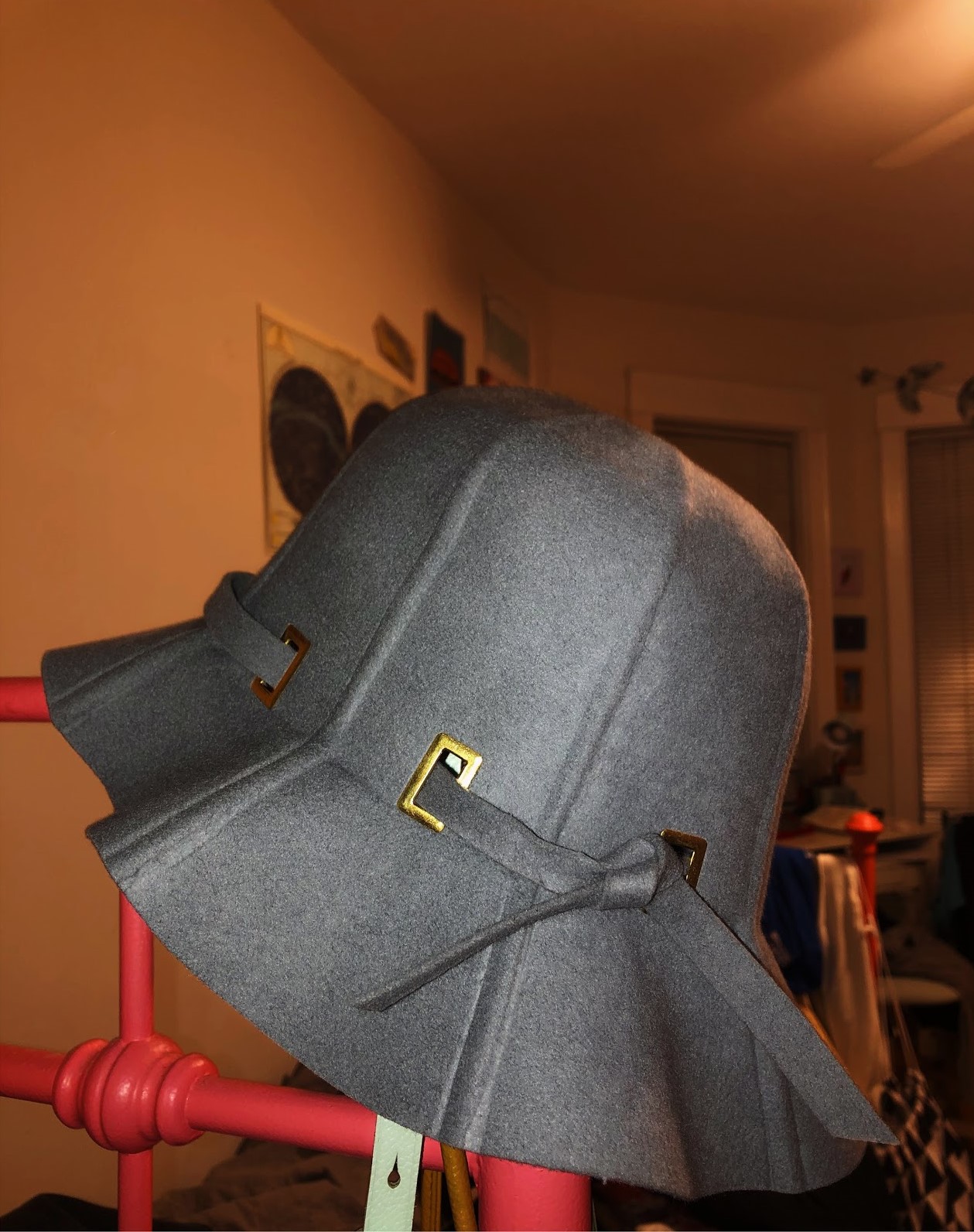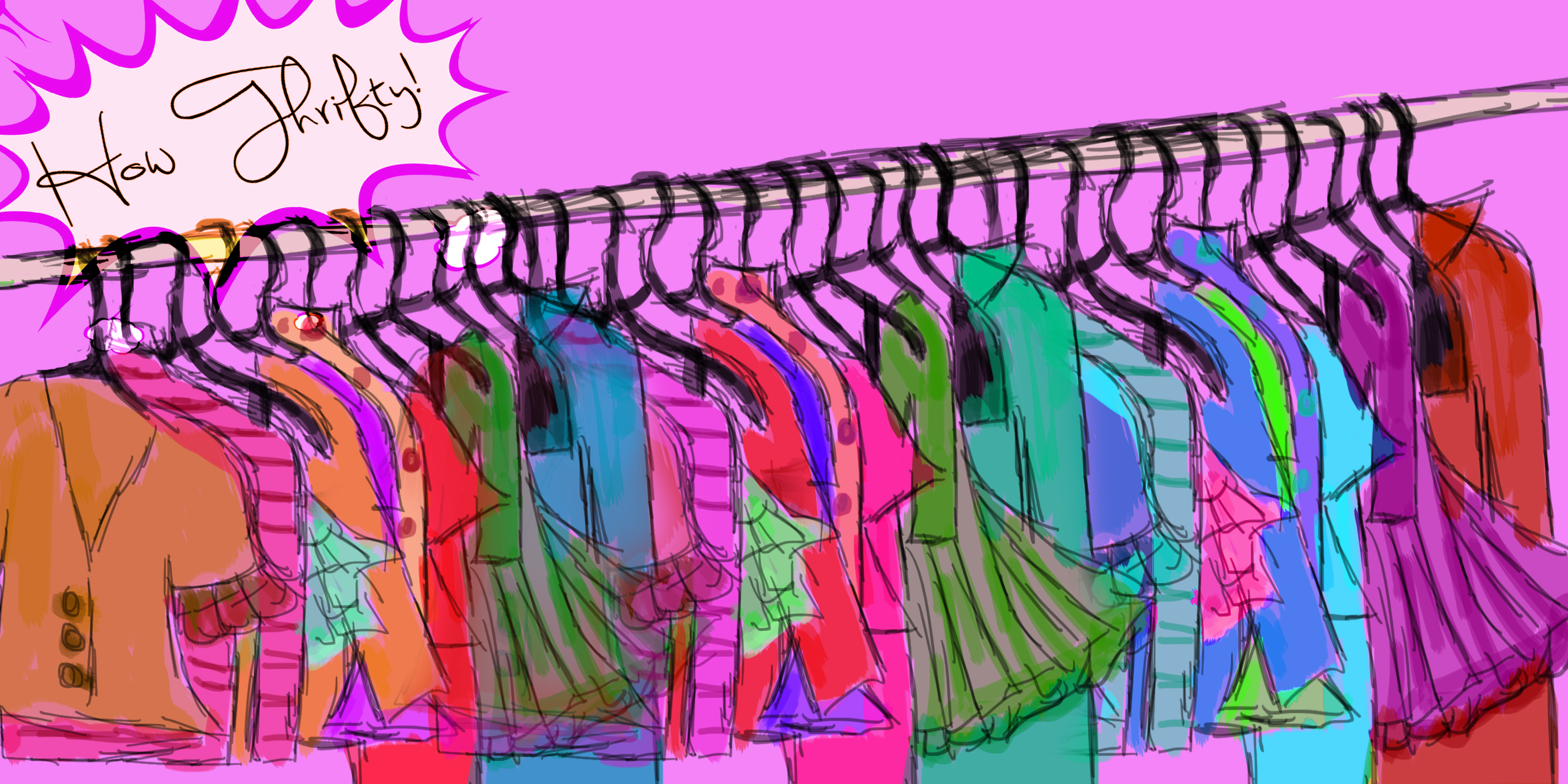If you think you just saw your dad’s old Hawaiian shirt from the ‘80s across campus, you just might be right.
Looking around DePaul’s campus, vintage fashion is a common sight, often including some thrifted pieces. Depending on where you go, you can find clothes that were popular a year or even half a century ago. Sophomore Hannah Matthews was recently able to thrift this Henry Pollak hat dating all the way back to the 1960s from Tilly Vintage Exchange in Andersonville.

(Photo courtesy of Hannah Matthews)
What you might not see is that behind a ‘90s pencil skirt or a cute sweater someone passed on is a desire for sustainable fashion options. DePaul students have fought for more sustainable practices around campus over the years, and some have taken it upon themselves to use their own personal style to combat fast fashion – rapidly produced clothing by mass market companies often made out of cheap materials.
Thrift shopping offers an alternative with a greener way to shop. By utilizing already-made clothing rather than buying new items produced in mass, waste is decreased. Additionally, often the quickly produced clothes do not last, and result in polluting the earth with unused and plastic-based clothing.
“I dislike fast fashion because it supports a culture of waste and constant consumption,” said junior Delaney Oakes. “There is already so much clothing being wasted in the world and buying low quality items contributes to this, especially as most of the items will not last and end up in a landfill pretty quickly. It’s a rip off.”
The EPA reports that 11.2 million tons of textiles ended up in landfills in 2017 alone.
This is partly the result of synthetic materials and chemicals becoming a staple in fast fashion. About 60 percent of clothing is made of solely plastic materials such as nylon, polyester and acrylic, according to Vox. All three are known to release microplastics during the wash, which lead back to our waterways. This is where the sustainable appeal of thrift shopping comes in, offering an alternative to the harmful industry.
“There’s 52 seasons in fast fashion, so that means every week they’re producing and putting out new clothing. That’s so much waste,” said junior Hannah Lemaster. “I think that fast fashion puts a huge emphasis on trendy clothing rather than clothing that will last you.”


(Photos courtesy of Hannah Lemaster)
This 52 season microtrend production requires cheaper materials in order to produce more. How many times have you had to throw out an item that shrunk too quickly for your taste, or a thread broke loose and now your shirt is beginning to unravel?
Fast fashion has also been well-documented in its companies’ connections to human rights violations for underpaid workers and the dangerous conditions. Overseas workers have been found to face unlivable wages and sexual harassment from supervisors, as well as health defects from the materials used in production. Not only do these companies produce their clothing unethically, but most of this labor goes to waste when the clothes are quickly thrown out or unbought.
“The fast fashion model means that many clothes are produced that may never be sold (or will rip or go out of style within a few washes – or a few weeks). This creates waste that surpasses what the resale industry can sell,” said Christie Klimas, a DePaul environmental science and studies professor. “So we’re using resources we’ll never have again to make clothes that we may never (or rarely) wear.”
Aside from reducing their carbon footprints, DePaul students enjoy thrifting in order to form their own styles outside the trends of fast fashion.
“I like it because you have the chance to find items that are unique and make [an] outfit that not many other people have,” Oakes said. “You have to work a little harder to come up with an outfit because it isn’t just being handed to you. I enjoy the process.”


(Photos courtesy of Delaney Oakes)
Oakes cites thrift shopping as a “lower form of retail therapy” for her. She likes listening to music while she scours through racks of clothes for a few hours to find the best pieces.
Lemaster says that she enjoys thrift shopping because it allows her to find unique clothing without contributing to the landfill dilemma.
In her time at DePaul she has come up with a few regular stores to shop at, mostly near DePaul’s campus.
Her favorites include the various Village Discounts found throughout the city, as well as curated thrift stores such as Shangri-La Vintage, Buffalo Exchange and Brown Elephant.
“If you’re looking for something specific or something with a specific style, you can go to one of these curated thrift stores where they go to the bigger stores and thrift their style,” she said. “Sometimes they’ll be a little more expensive, but it’s still secondhand clothing so it’s not contributing to fast fashion.”
Lemaster said these stores are better ways to find stylish clothing when thrift shopping than a trendy fast fashion store because the selections are much more unique.
For senior Nina Wilson, thrifting has always been something she enjoyed. Growing up, she would look for clothing and furniture deals with her mother.
“I feel like I have always done it,” she said. “I feel like I know how to find cute stuff and really unique pieces.”


(Photos courtesy of Nina Wilson)
Thrifting allows for a much bigger impact than just on your wallet. You might not find the newest windbreaker or latest sneakers, but you can find something no one else has. What’s better than standing out in a way that is both stylish and kind to the Earth?
Header image by Yusra Shah




NO COMMENT